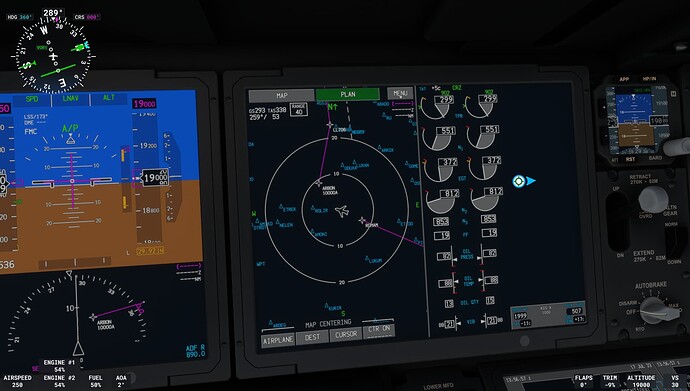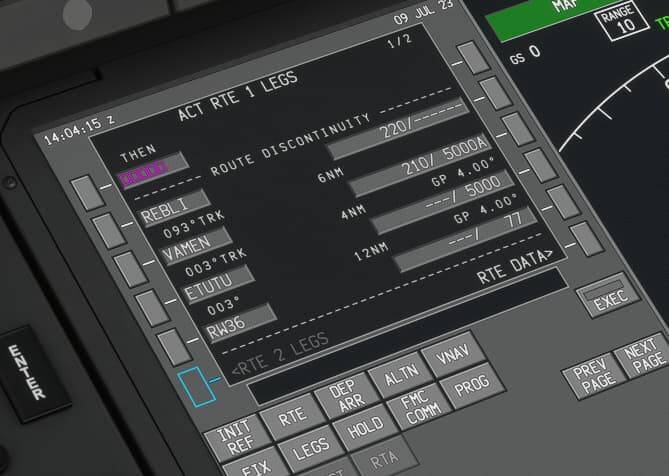OP - It’s my understanding, that LNAV will not catch route unless you are within 5 degrees of the course it’s supposed to fly. This is true in PMDG-737 and other planes I have flown in sim.
On the Glareshield, push in on the altitude knob, this will cause the plane to start to descend provided you have put in a lower altitude. Either the SID waypoints altitude, or the first waypoint on the ILS approach should be your minimum, if SID, then you need to change that to the next lower altitude as the flight steps through it’s plan. I normally just pick the first waypoint on the approach plate, UNLESS, the difference is huge, then, I will use VS and dial in the approximate FPM decrease to arrive at the correct altitude at Approach Plate first waypoint.
If using ATC in sim, this all flies out the window, as they NEVER start your descent soon enough, nor do they get you to the first waypoint on the AP, that is assuming they have not changed your arrival RW. You most likely are close to doing it correct, it’s just a complicated process, and MSFS is not near perfect on this stuff. 787 to me is not worth wasting time on, still think flight model is bogus, and that plane flies different than any other ever flown in sim. Mainly because of the fly by wire system, and how that interprets my navigation using controls. A computer inside the thing, does change input values (so no overstress on Airframe), and it thinks it’s smarter than you the pilot). The wing flex looks like a goose landing to me.
The 747 is better, but I’m too fighting it to work correctly. If you want almost perfect plane, PMDG-737, but learning curve too, comes with excellent documentation and tutorial flight spelled out. I printed them out, keep in binder and when flying have handy reference, with my highlights on the bits I tend to forget.
I cannot speak to facts on this statement "I think there is an order of input into FMC/CDU system, one tutorial does it one way, one checklist does it another way, PMDG’s does not enter some of the arrival information until close to descent, so you have to do that inflight. I find moving all over the cockpit to see the FMS, cumbersome. Find and print out the Keyboard Binds on moving around CP, that helped me a lot. Fly away simulation has downloadable keyboard bindings free. But in cockpit just play with CTRL + 1-9 and see what happens, that made huge difference for me. Assume this only works in MSFS, as you use those your brain will learn them.
In Xplane you can bind a keyboard command (normally Alt + C) to pop out the FMS so you can have it displayed on the screen, so you see what your progression is. MSFS does not have that, nor is their a tablet for pilot (assumed you can display FMS on it), so, limitations in both. One thing in XP, which is needed in MSFS is a way to quickly and easily setup a 10-20 mile out approach so you can test your settings in the AP/FMS system. You can start a flight in the air, but I find that almost impossible to pinpoint correctly. Just easier as a choice in setting up the flight. Ease of use in XP is much better. However, everyone love graphics in MSFS, yes it’s nice, but not accurate, change season to winter, and notice all the green vegetation at a location which should be brown.
One other thing, all planes have a learning curve, and it’s not something which will be gold first attempt, trial and some error will occur. Do not be discouraged, and if necessary, step away and do something else which is fun. I have similar issues with 747 in MSFS and the SSG-747 in Xplane, both giving me fits. Some similarities, but enough difference nothing in XPs or MSFS version are transferrable as learning. Oh, well the APU starts the same.

